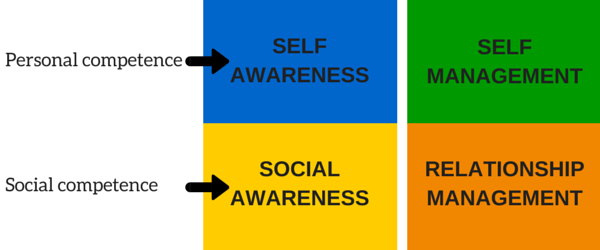This is the second in a series on the excellent book Emotional Intelligence 2.0 by Drs. Travis Bradberry and Jean Greaves. The book segments emotional intelligence into four areas: self-awareness, self-management, social awareness, and relationship management.

In this post, I’d like to point out three specific tactics for improving social awareness.
The authors do a fantastic job of describing social awareness:
Social awareness is your ability to accurately pick up on emotions in other people and understand what is really going on with them…listening and observing are the most important elements of social awareness. To listen well and observe what’s going on around us, we have to stop doing many things we like to do. We have to stop talking, stop the monologue that may be running through our minds, stop anticipating the point the other person is about to make, and stop thinking ahead to what we are going to say next.
1. Don’t Take Notes at Meetings
Often, it is more important to pay attention to others and read the mood of the room than it is to take thorough notes. Note-taking can, of course, be helpful, but it distracts from our awareness of the other. And since collaborating effectively with people is more difficult than recording all the details in a meeting, it’s a net-gain to focus on others instead of taking notes.

Notes are still important; as the authors suggest, “If you need to take notes for practical purposes, temporarily stop at intervals to practice observation.” In my own experience, writing down one or two keywords for each detail is often more than enough–after the meeting, I can review the keywords and reconstruct what was discussed. Anything that takes more than a couple of keywords probably requires more written detail than can be shared verbally in a meeting.
Additionally, I recommend writing notes on a piece of paper or notecard instead of a computer. It is a strong visual cue to the other that you’re paying attention to them, not whatever is on the computer screen they can’t see.
2. Step into Their Shoes
For me, the easiest way to understand and empathize with someone else is to imagine myself going through the same experience they have. Think about their background, what they are familiar or unfamiliar with, what kinds of organization they’re in, their incentives, pressures to perform, what information they have (vs. what you or others have), etc.
From within this context, I then like to imagine the most generous interpretation of what is going on. I assume others intend to do the best they can with their current context and the information they have.
Armed with the above, I find that I not only understand the situation better, but I also respect the person more, as I realize I’ve reached the same conclusions and behavior they have. It turns out we’re all human after all!
3. Develop a Back-pocket Question
There are all kinds of handy tactics for getting to know another person–asking about common traits (like family, hobbies, etc.), taking a genuine interest in their perspective, and asking about the emotions behind their words are all effective… most of the time.
Sometimes, despite best efforts, people remain a little reserved and unwilling to open up. This is where the back-pocket question comes in handy. Ask about something unrelated, or only tangentially related to what you were discussing. The shift in contexts can often get people to open up more than they would otherwise.

Even the back-pocket question doesn’t always work. If it doesn’t, then perhaps it is time to move along and try again another day. Better to take your time than create an awkward, drawn-out conversation.
Wrap-Up
Social awareness is first and foremost about observation and understanding others. Observe instead of take notes. Query and empathize with others. By doing so, you’ll walk away from any interaction with a deeper perception of what’s really going on.
This is the second in a series on Emotional Intelligence 2.0 by Drs. Travis Bradberry and Jean Greaves.
- Improving Your Self-Management
- Improving Your Social Awareness
- Improving Your Relationship Management
- Improving Your Self-Awareness (coming soon)

